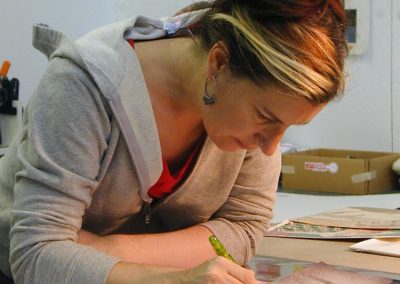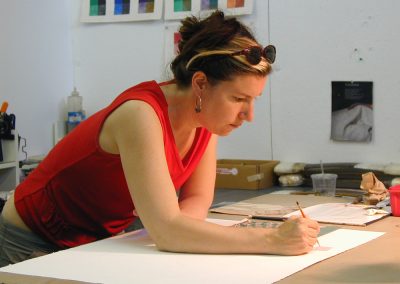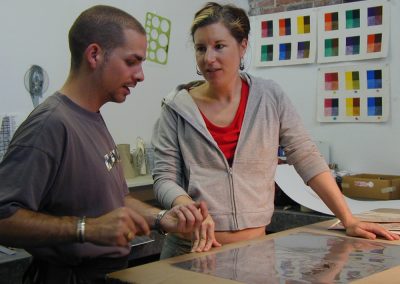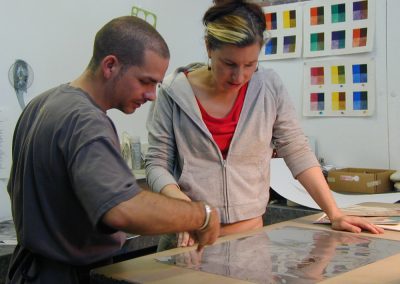Julia Jaquette is a contemporary visual artist known for her paintings, drawings, and multimedia works that explore themes of consumerism, femininity, and desire. Her art often features meticulously rendered images of food, household objects, and everyday scenes, juxtaposing the allure of advertising with the realities of domestic life. Jaquette’s work critiques the ways in which media and marketing shape our perceptions of beauty and satisfaction, inviting viewers to reflect on their own consumption habits.
Her work has been shown extensively at galleries and museums around the world, including the Museum of Modern Art (NY), The Museum of Fine Arts Boston, and The RISD Museum among other institutions. Jacquette’s work was included in the first installment of PS1’s “Greater New York” exhibition and was the subject of retrospectives at the Tang Museum in Saratoga Springs (NY) and the Wellin Museum in Clinton (NY). She has taught at the Rhode Island School of Design, Princeton University, and is currently on the faculty at the Fashion Institute of Technology (NYC).
Since childhood I have been fascinated by total whiteness–in interiors, architecture, artwork, and particularly by the all white buildings of Richard Meier. My father is an architect, and I grew up in an environment that obeyed the rules of modernism. However, other white-on-white things that were certainly outside the rules of modernism were also dazzling to a little girl—like the all white Christmas trees popular in the 70’s, and the mini-bride outfits worn by girls in my neighborhood at their first communions. My paintings and prints are an attempt to combine these two concepts of what is beautiful about those objects. In my paintings I use a grid of squares as the organizing structure in which I place different close-ups of white objects that happen to be highly decorated–wedding dresses, wedding cakes, white flowers. A related issue that has emerged from this project is my own attraction– and ambivalence– to the bridal industry. By combining the minimal and the highly embellished, I try to question the idea, widely accepted in our culture, that the highly decorative is necessarily “feminine.”
– Julia Jacquette
More Information
Artist Website





